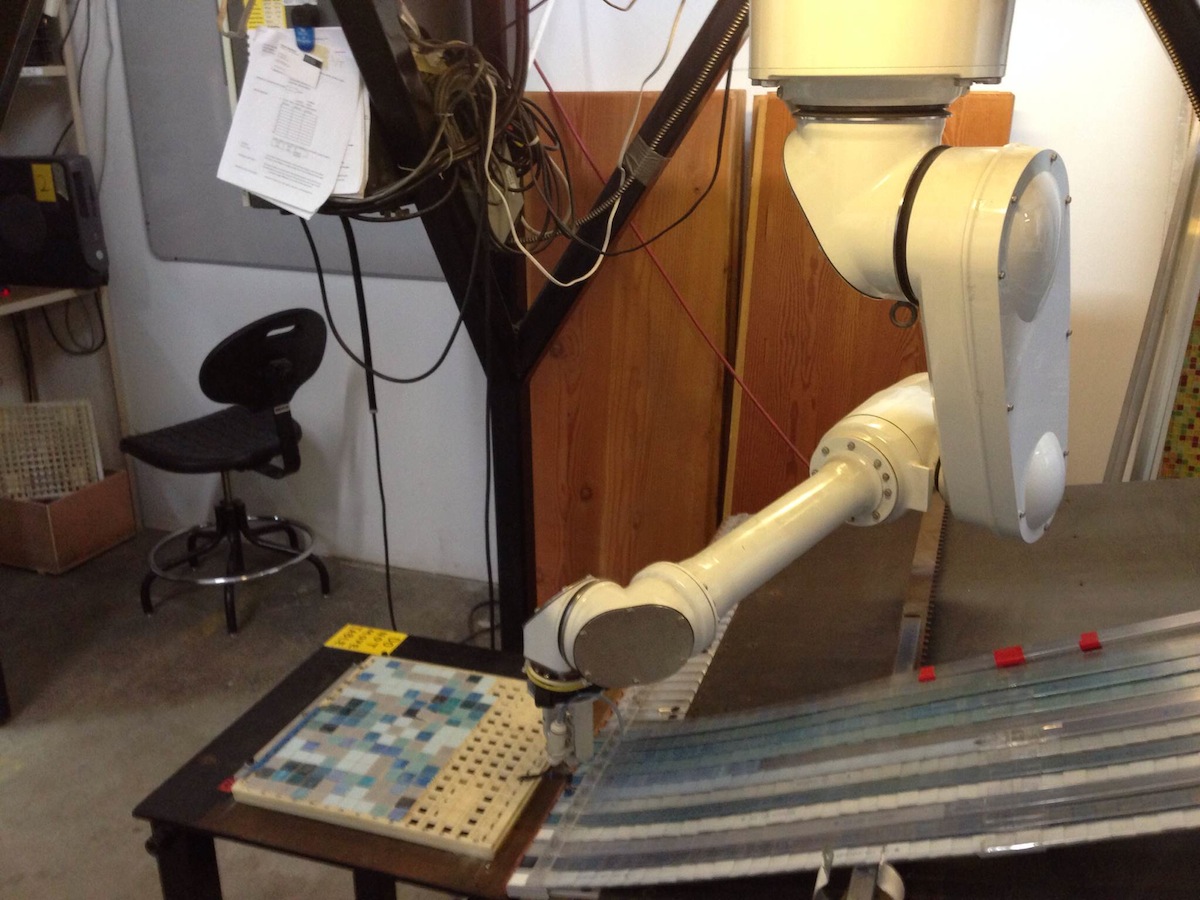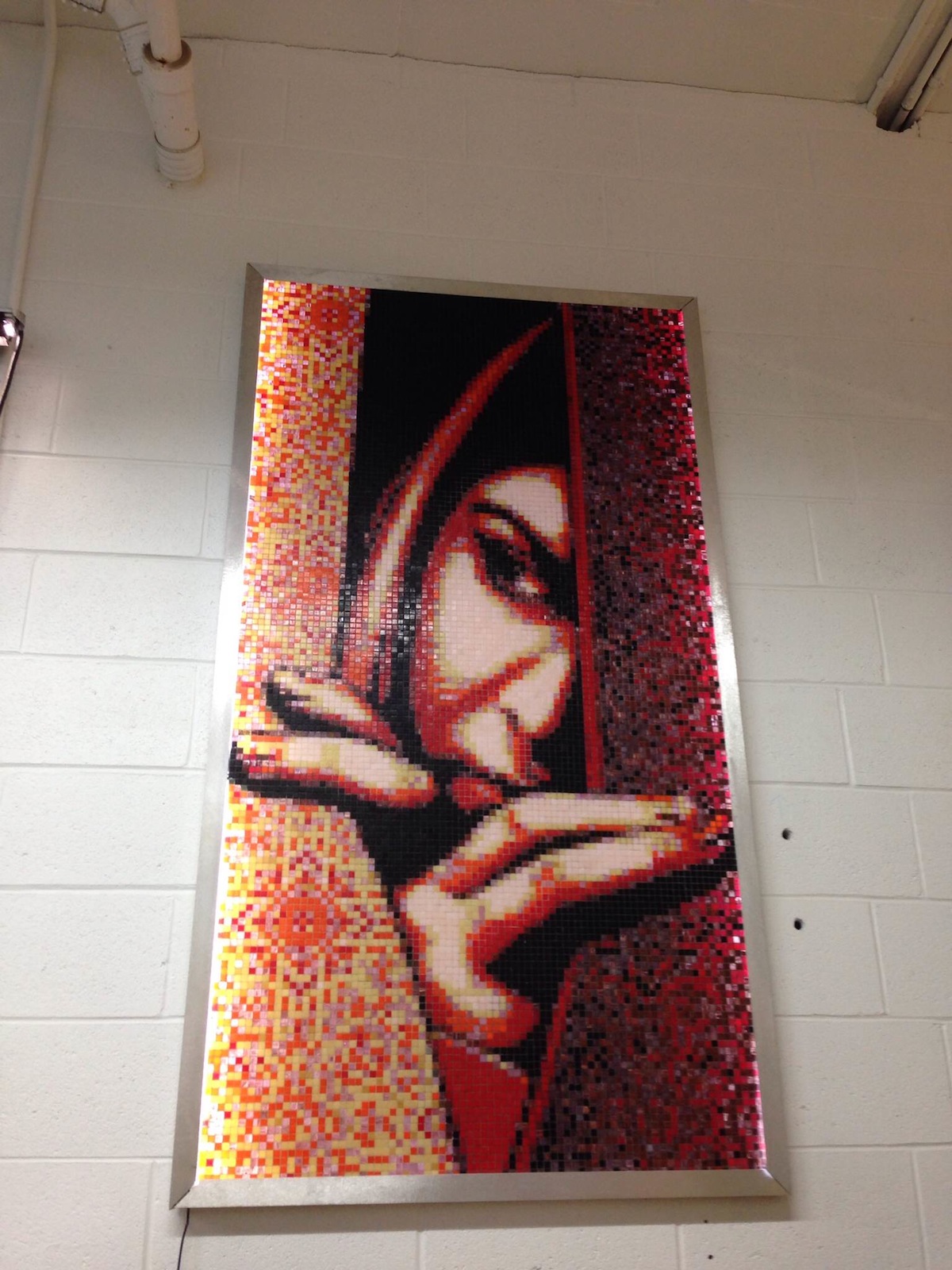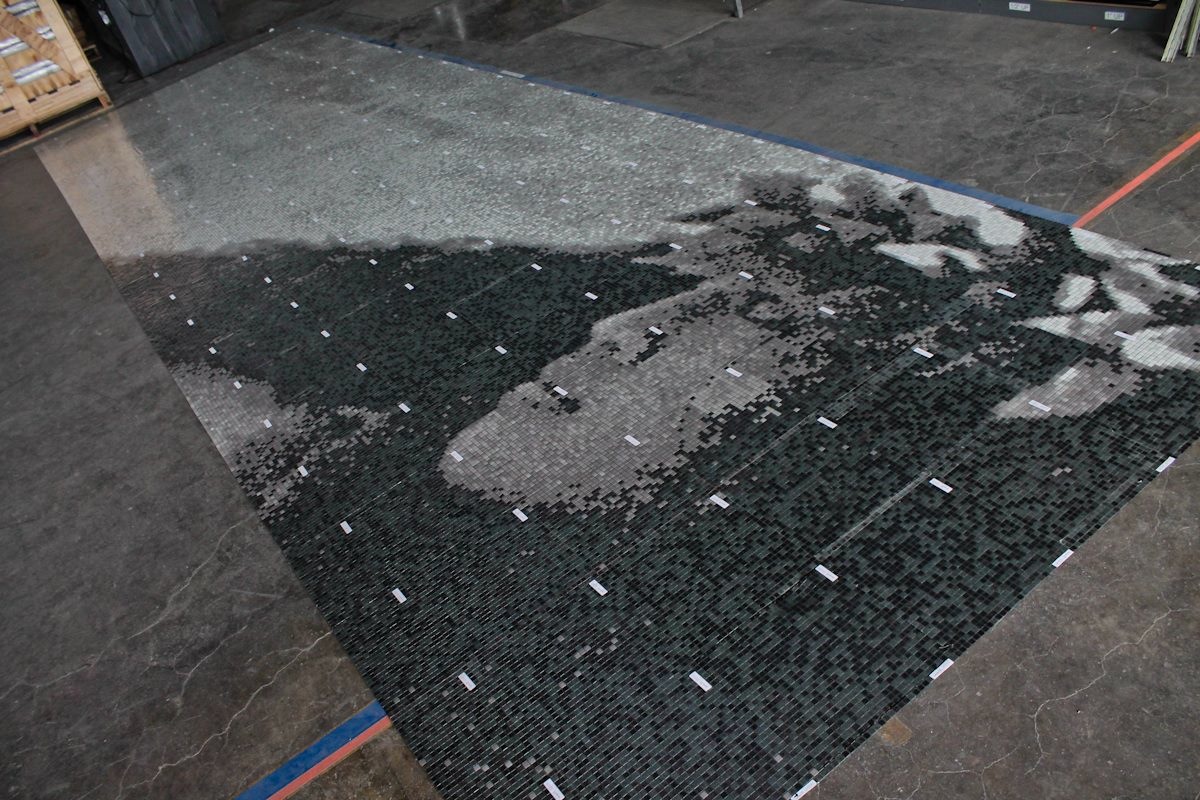Artaic Is Disrupting the Manufacturing Process, One Tile at a Time

Photo by Steve Annear
Tucked away near the harbor, not far from the much talked-about, bustling Innovation District, sits a long, colorless facility that most people likely pass without giving it a second glance.
But inside that gray, oblong building that seems to hide in plain sight, Artaic founder and CEO Ted Acworth and his team of 23 employees are toiling away with tiny, colorful pieces of tile, creating some of the largest mosaics in the country—and around the world—for renowned hotels, hospitals, and universities.
A self-described “recovering rocket scientist,” with degrees from MIT and years of research and engineering experience with NASA, Acworth first opened the doors to Artaic in what’s known as Boston’s Marine Industrial District back in 2007. Part of a 191-acre site on the South Boston waterfront, Artaic’s quaint office is buried within a building that boils over with architecture firms and manufacturers, just a stone’s-throw away from beer brewers, research facilities, and seafood processing plants nearby.
“There are lots of makers and creative types [in this building]. We work with three architecture firms, there’s a company across the hall that does engineering. It’s a broad array of pretty creative companies,” said Acworth, describing his decision to settle down in the secluded portion of Boston, near the shoreline. “I remember looking for space around Boston and I thought maybe Kendall Square, or maybe up in Cambridge, but then I realized the Boston Design Center was down here and I said, ‘that’s our market.’”
It’s in that building, owned by Jamestown Properties, where hardly a single sign outside gives any indication about what sorts of operations lie beyond its heavy doors, that Acworth relies on the work of his design, sales, and marketing teams and two custom-built robots to create mosaics that range from 500-square-feet, to upwards of 90,000-square-feet, one sheet at a time.
Upon entering Artaic’s “showroom”—makeshift wooden panels act as walls separating a small lobby that feels like the interior of a mechanic’s garage from a row of computers where employees click away to render mosaic designs using a custom-built CAD program—the bright tiling of past projects stands out against the drab gray walls, giving guests a sneak peek into the type of visionary artwork that is manufactured by the startup style company.
Just steps away from the front entrance, a repetitive whirring sound, reminiscent of a super-sized copy machine, can be heard. That sound comes from a robotic arm named “Arty,” built by Acworth, that plucks minuscule tile pieces from long, numbered tubes, and places them in succinct patterns that are later pieced together, one-square-foot at a time, to form the final product for Artaic’s customers. “We like to say we work for the robot,” Acworth said. “We automate the low-value jobs that aren’t good for people, and focus on the high-level jobs, like designing, and engineering, and marketing, and selling—we enhance those jobs with people.”

Acworth, whose love for mosaics spawned from his world travels during college, said Artaic is disrupting a $5 billion industry that mostly relies on shipments from overseas at high costs, and rarely features facilities on U.S. soil.
By creating his own technology to perform some of the most complicated aspects of the creation process, Artaic is breaking the mold that contemporary mosaic-building companies fall back on. “If you go out and open a pizza store, you go out and buy an oven. But we designed and built our own custom oven, and it’s faster, better, cheaper, and we use it to make our pizza. And our pizza is better,” said Acworth, referring to “Arty.”
While the robots are responsible for planting the tiny tiles into place for each sheet that makes up the mosaics, workers concentrate on other areas within the trade, following a rigorous five-step product assurance regiment to make sure not a single tile is out of place.
After the designers make mock-ups of the mosaics going into production, they’re sent over to an employee that puts together a sample sheet for clients. From there, the correct colors are corralled from hundreds of clear, plastic boxes full of tiles that line the shelves of a warehouse-style area of the facility. Acworth said his company likes to stick to bright, vibrant tiles that bring life to the mosaics to create an image that is sharp and stands out. “We convert the tile into a piece of art,” he said. “There’s still rocket science involved, but it’s behind the curtain.”
The next step relies on a team that Acworth refers to as “air traffic control,” who make sure all the colored tiles get properly placed into the long, plastic tubing that’s numbered accordingly, so the robotic arm knows which sheets they need to be placed in.
Then it’s off to Arty, and with the click of a button and some human monitoring, the sheets are made, a polymer cover is added, and they’re ready to be laid out for one last quality check before being shipped. “That’s sort of the beauty of the process. No matter how big the project, it’s just a stack of sheets that we send out,” said Acworth. “We’re pushing the envelope of advanced manufacturing.”
While the current business model’s limited to large-scale mosaics—Artaic has artwork at MIT, Google’s Boston office, the Taj Mahal in Las Vegas, and the Bellagio, to name a few—Acworth said his team is working on an e-commerce website that would one day allow people to play around with ideas online to create custom designs.
He also has two more robots in development being built with the use of grant funding from the National Science Foundation, to pioneer the new technology and software systems. The creation of additional robots won’t only help create more jobs at Artaic, but Acworth said it will continue to set his company apart from the way other manufacturing plants conduct business, and further disrupt an industry that is often outsourced to other countries. “We don’t go buy the pieces, we invent the pieces and then use them to make our product. That’s what makes us so competitive,” he said. “People settle for low-end stuff. But if we can make these tools more available, we could get much more people to get into the nicer, more beautiful work. And that’s a big market.”


photo via Artaic

Photo via Artaic

Photo via Artaic

